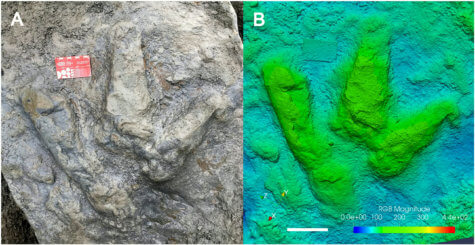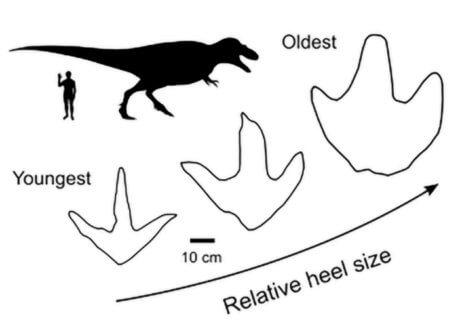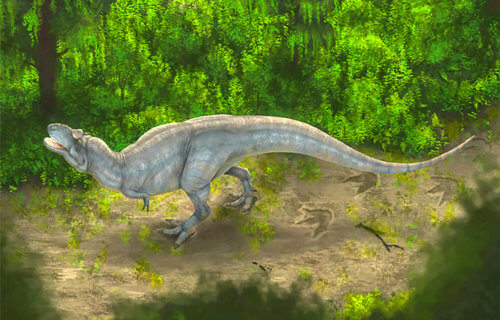ARMIDALE, Australia — The Tyrannosaurus rex may have been among the most feared dinosaurs, but just like many of us, their mobility significantly worsened as they aged. Research reveals that the older T. rex couldn’t keep up with its younger counterparts because of fat feet.
Adult predators developed fleshy trotters that slowed them down. “The results suggest that as some tyrannosaurs grew older and heavier, their feet also became comparably bulkier,” says lead author Nathan Enriquez, a paleontologist at the University of New England in Australia, in a statement.
The discovery is based on remarkably detailed T. rex footprints of different sizes unearthed on the prairies of Northern Alberta, Canada. “Based on the relatively close proximity between these discoveries and their nearly equivalent ages — about 72.5 million years old — we suggest they may indeed belong to the same species,” says Enriquez. “Fully grown tyrannosaurs were believed to be more robust than younger individuals based on their relatively shorter hind limbs and more massive skulls. But until now, no research had explored this growth pattern using fossil footprints — which are unique in that they can provide a snapshot of the feet as they appeared in life, with outlines of the soft, fleshy parts of the foot that are rarely preserved as fossils.”
The study shows that juveniles were slenderer and relatively faster for their size.

T. rex is believed by many to be the deadliest animal that ever lived. It reached more than 40 feet from nose to tail, was bigger than a bus, and weighed up to eight tons. Its five-foot-long head housed 60 gigantic dagger-like teeth shaped like bananas. Its bone-crunching bite would crush a car. Massive jaw muscles could chomp down with a force of over six tons, turning armored animals into packed lunches.
The latest findings shed fresh light on how the iconic creature aged and moved. They back a growing theory that adolescents were sleeker, speedier predators. Previous research has suggested they had sharper, blade-like teeth, making them even more deadly.

Once the team had a suitable sample, they analyzed the outlines using a method called geometric morphometrics. The technique reveals what the most important differences in track shapes are. The greatest difference was the relative width and surface area of T. rex heel impression, which significantly increased in size between smaller and larger footprints.
“The smaller tracks were comparably slender, while the biggest was relatively broader and had much larger heel areas. This makes sense for an animal that is becoming larger and needs to support its rapidly increasing body weight,” notes Enriquez.
The study is published in the Journal of Vertebrate Paleontology.
South West News Service writer Mark Waghorn contributed to this report.
